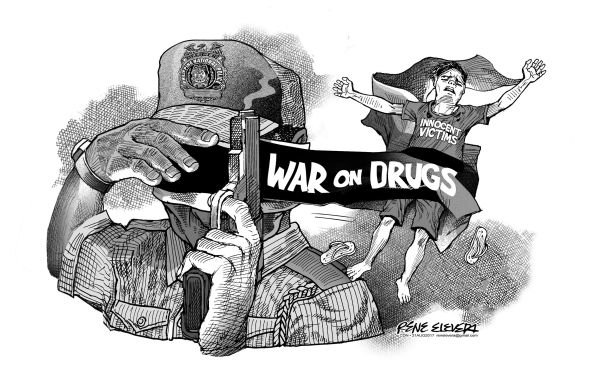
A few months back, it was the death of South Korean Jee Ick Joo, who was murdered by police officers on Oct, 18, 2016 near the PNP headquarters, that pulled the brakes on the Duterte administration’s brutal war against illegal drugs.
Now, another murder committed by police officers in civilian attire exposed yet another ugly side to that anti-drug war. The victim wasn’t a foreign businessman but a 17-year-old boy whose innocence of drug involvement was attested to by residents and barangay officials alike in Caloocan City.
Even with an assurance from Senior Supt. Joel Doria, Cebu City police chief, that murder similar to the case of Kian won’t happen in Cebu City, the security camera footage showing civilian attired police officers dragging what many believed to be Kian will hound and haunt police officers in their anti-illegal drug operations.
Even with the reported suspension of the police officers involved in the “One Time, Big Time” operation in Caloocan City that claimed Kian’s life, the incident fueled long-standing speculations of summary executions of drug suspects being greenlighted by the Duterte administration.
In citing the Kian case as yet another in a long line of cases of summary executions, critics of President Rodrigo Duterte also point to his previous speech in which he is said to have encouraged police officers to give “a loaded gun” to drug suspects caught in operations in the event they want to resist arrest.
There is little doubt that the Caloocan City police officers tagged in Kian’s death may have taken the President’s speech a little too seriously.
Then again, how can they gauge the President’s sentiments when Mr. Duterte is prone to clarifying his usually inflammatory and expletive-laced speeches with the excuse that he was “just joking?”
Kian’s case may also be referenced by the family of PO3 Ryan Quiamco, the police officer killed in a drug bust in Talisay City, as yet another instance of a rubout or summary execution.
But while Quiamco owns houses and two farms without a clear explanation as to how he acquired it on a policeman’s salary, Kian was an ordinary student whose family operated a sari-sari store and whose mother worked abroad as a helper to survive. The Caloocan City police also had to prove their allegations that Kian was a drug runner.
In assuaging fears and suspicions of rights violations in the war against drugs, Doria said Cebu City police are given briefings on the do’s and don’ts in every police operation against illegal drug pushers and dealers. As to whether they are monitored for 100 percent compliance of these requirements, we doubt if the police will be bothered by such entreaties.
What we do know is that Kian’s death has raised serious questions and sparked fresh debates on the wisdom and regularity of these intensified police operations that occurred despite reminders of guidelines that emphasize a suspect’s right to due process.
By making Kian’s death look like a shootout, the police have the blood of children on their hands and every operation will invite further questioning and debate from the public.